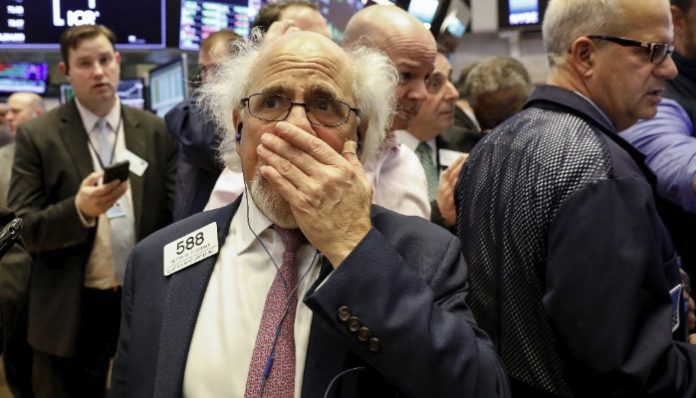Stocks dropped again this morning as the major indexes retreated further from their recent highs. The Dow, S&P, and Nasdaq Composite all fell while tech stocks took the brunt of the damage. Some Wall Street analysts believe there could be more selling in the weeks to come.
“We see a bumpy September-October as the final stages of a mid-cycle transition play out,” said Morgan Stanley strategist Andrew Sheets in a recent note.
“The next two months carry an outsized risk to growth, policy and the legislative agenda.”
Equities initially opened trading for only a small loss. But at 10 am EST, the Job Openings and Labor Turnover Survey (JOLTS) was released, cratering tech (and the rest of the market) in the process. The Bureau of Labor Statistics (BLS) revealed a massive 10.934 million job opening print for July.
The data blew away the FactSet estimate of 9.9 million openings after the US economy added 4.2 million of them over the last seven months. Healthcare (+294,000), finance (+116,000), and food services (+115,00) saw the largest job opening gains in July. One could speculate that Covid vaccine mandates potentially chased otherwise willing workers away from both the healthcare and food services industries.
More shocking than the number of openings, though, was the discrepancy between those openings and continuing unemployment claims. Analysts expected openings to outpace continuing claims by 1.7 million.
Instead, there were a record 2.232 million more job openings than unemployed Americans (8.384 million) in July. Worse yet, the quit rate – the percentage of private-sector employees leaving their jobs to move to new ones – ticked back up to the all-time high of 3.1%. Historically, high quit rates have coincided with pressure to raise wages. This is because employers need to retain employees via wage hikes as quits climb. This, in turn, can cause inflation to rise.
The July JOLTS report supports the theory that the unemployed simply don’t want the jobs that are available. As a result, it’s highly unlikely that the Delta variant caused the major August jobs report “miss” – something the US government (including President Biden himself) said last week.
Emergency unemployment benefits mercifully expired on Monday, which should help fill millions of those openings in September. Small businesses (those with less than 50 employees) have been hit the hardest by the labor shortage and could spur on a “hiring blitz” by month’s end.
Critics of the decision to not renew unemployment benefits have cited studies suggesting that the elimination of benefits doesn’t necessarily lead to job growth. This argument is principally flawed for the current situation, however, as the problem with US labor has nothing to do with job growth. It’s all about unemployed Americans not wanting to work.
Thankfully, now that the majority of benefits have expired, the labor recovery should see a nice bump to finish out the year. Wage growth may even recede as well, limiting its impact on inflation. So, even though the August jobs report was a bit of a disaster, investors could be treated to a true “Goldilocks” September jobs report in October.
July’s jobs report delivered a big payrolls “beat” while wages refused to budge. It was exactly what bulls wanted to see. Come October 8th, the BLS should unveil a similarly bullish data set just a few weeks after the Fed is expected to speak on tapering (or a lack of tapering) following its September FOMC meeting.
Which, ultimately, could spark another market-wide rally right on through to the holiday season.







